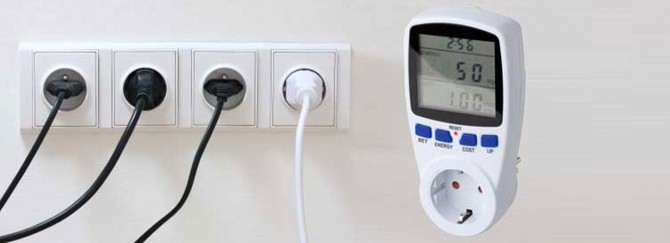

Did you know that nearly 10% of your electricity bill literally goes up in smoke due to the standby consumption of your devices? This invisible enemy eats away at your savings without you even realising it. Discover how to track down and neutralise this phantom consumption.
Many electrical devices consume power even when you're not using them. Think about your modem or TV set left on standby for convenience, smartphone chargers or even your electric toothbrush.
Just some of the equipment that's always plugged in and consuming power without your knowledge. This consumption is often low, but it can quickly add up if you own several such devices. Every watt of standby consumption costs you nearly 3 euros a year. So there are significant savings to be made.
According to the French Agency for Ecological Transition ADEME, every home has somewhere between 15 and 50 devices on standby. The consumption of these devices can therefore represent up to 10% of your electricity bill.
According to the Commission for Electricity and Gas Regulation CREG, at the average "all-inclusive" electricity tariff in March 2024 (€0.31/kWh), this amounts to approximately €90 per year charged to you without providing any additional comfort.
In addition to making savings, eliminating standby consumption offers several benefits.
To detect standby consumption, you simply need a power or energy meter. This device costs between 15 and 20 euros and enables you to measure the electrical power drawn by a device at any time.
Plug it into the socket and then connect the power meter to the device whose consumption you want to measure. The power meter gives the real-time consumption along with the total consumption over a defined measurement period.
It is advisable to measure the standby consumption of a device throughout the night. Multiply this consumption by 365, then by the electricity tariff. This will give you the exact annual standby consumption of the device. Consider testing the power adapters of some devices too.

There are also smart power meters that enable you to monitor all your electrical devices in one place, on a smartphone, tablet or computer.
Some models also allow you to programme scenarios to reduce your electricity bill, such as automatically turning off certain devices.
If you have a smart meter, you can also track your electricity consumption in real-time, without any investment. Simply consult the display code 1.7.0 on the smart meter screen to find out your consumption at that precise moment.
There are also energy management systems that can give you more detailed information about your energy consumption per device and your overall consumption, using an app or an online portal.
Here are the 5 devices to examine first to detect standby consumption in your home:
| Set-top box | 18 euros / year |
| Modem/routeur | 10 euros / year |
| Desktop computer and screen | 10 euros / year |
| Television | 3 euros / year |
| Game console | 3 euros / year |
Sources : ADEME data (2021) and Test Achats data (2018). Cost calculation carried out based on an average "all-inclusive" price per kWh of €0.31 (March 2024).
Once you've identified the devices that are consuming a lot of energy in standby, you must put an end to this unnecessary consumption. There are several ways to do this:
See also: 'How much energy do my household appliances use?' & 'How can I calculate the consumption of an electrical appliance?'
Subscribe to our newsletter and stay informed about energyfacts.